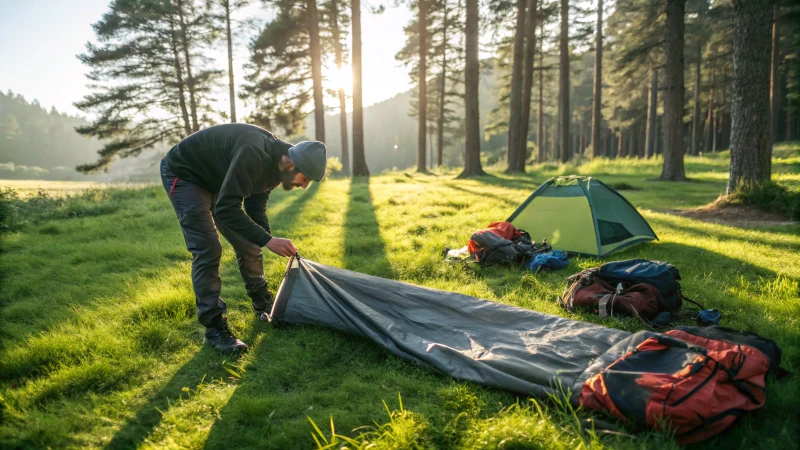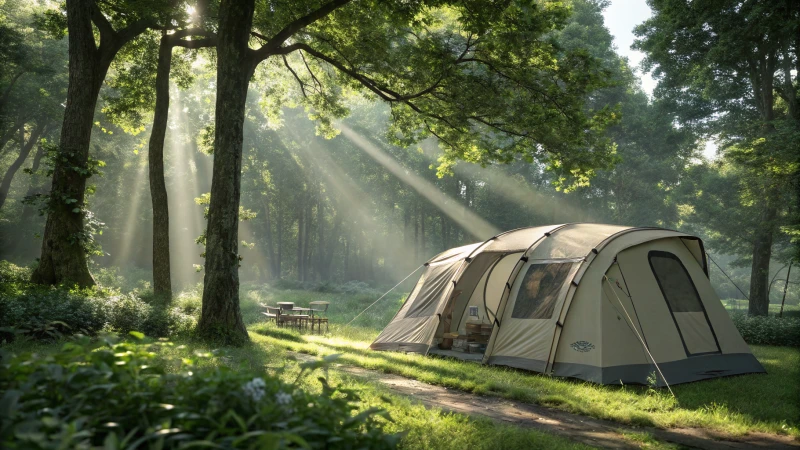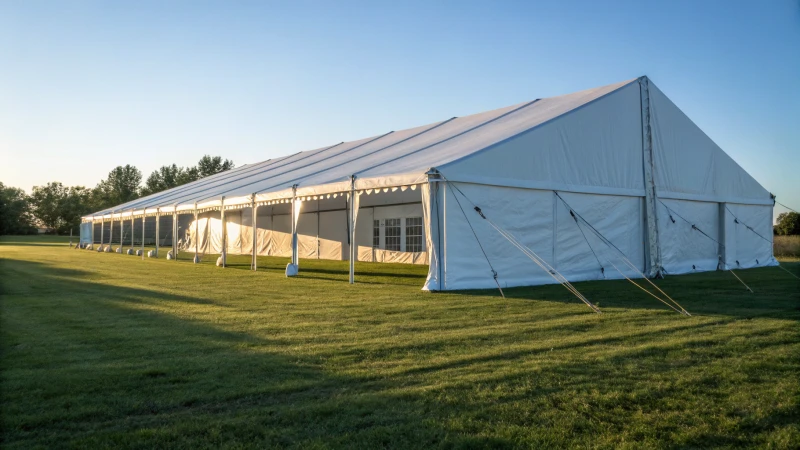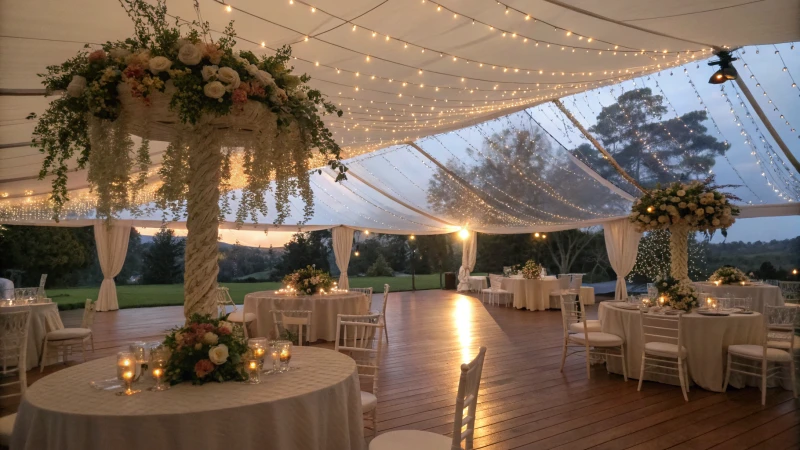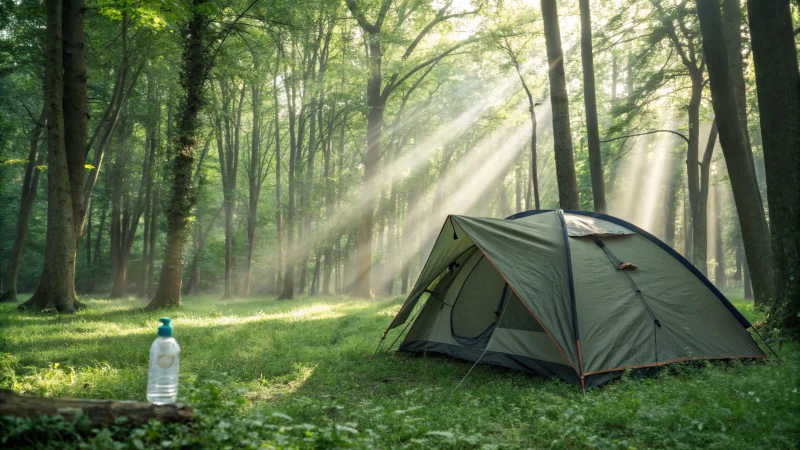
Ever found yourself battling with a sun-damaged tent on your outdoor adventures? Trust me, I’ve been there.
To protect your tent from UV damage, opt for UV-resistant fabrics, pitch it in shaded spots, use UV-blocking sprays, and limit direct sun exposure. These tactics preserve your tent’s strength and extend its life.
I remember one camping trip where my tent ended up looking like a faded relic after being parked in the sun all day. That’s when I learned the hard way how crucial it is to safeguard against UV rays. Beyond the basics, don’t forget to use a tent footprint or tarp to shield the base from ground-reflected UV rays. Also, regularly cleaning and storing your tent properly can make a world of difference. So, let’s dive into more tips to keep your tent as good as new.
UV-resistant fabrics extend a tent's lifespan.True
UV-resistant fabrics help prevent sun damage, prolonging tent durability.
Pitching a tent in direct sunlight prevents UV damage.False
Direct sunlight increases UV exposure, accelerating tent material degradation.
What Makes UV-Resistant Fabrics So Essential?
Ever felt the sting of a sunburn after a day out? Imagine if your gear could feel it too. That’s where UV-resistant fabrics come in.
UV-resistant fabrics are designed to block harmful ultraviolet rays, preventing skin damage and protecting materials from deterioration. They play a crucial role in prolonging the life and safety of outdoor items.

Understanding UV-Resistant Fabrics
When I first heard about UV-resistant fabrics, I thought, "Isn’t that just for sunscreen?" But it turns out, these fabrics are a game-changer for anyone who spends time outdoors. Whether it’s the natural UV-blocking properties of wool and polyester or the high-tech chemical treatments enhancing modern textiles, these fabrics are all about keeping us and our stuff safe from the sun’s relentless rays.
How UV-Resistant Fabrics Work
I remember setting up a tent one summer, feeling like I’d found the perfect spot. But by noon, everything inside was baking under the sun. That’s when I learned that not all fabrics are created equal. The magic happens through absorption or reflection of UV rays. It’s like having an invisible shield. A tightly woven, thick, dark fabric can offer serious protection compared to its lighter, loosely woven counterparts.
Table: Factors Influencing UV Protection
| Factor | Impact on UV Resistance |
|---|---|
| Weave | Tighter weaves block more UV rays |
| Color | Darker colors absorb more UV light |
| Thickness | Thicker materials provide better shielding |
Importance of UV-Resistant Fabrics
Using UV-resistant fabrics isn’t just about avoiding a sunburn; it’s about long-term protection. I’ve seen firsthand how a tent without UV protection1 fades and weakens over time, becoming less reliable with each use. But with UV-resistant materials, your outdoor gear retains its strength and color, providing peace of mind that it’s ready for whatever adventure comes next.
Applications in Everyday Life
I’ve started seeing these fabrics everywhere—from the clothes I wear hiking to the covers on my patio furniture. And it’s not just personal use. Industries like construction and agriculture rely heavily on UV protection technologies2. For them, it’s about safeguarding equipment and ensuring worker safety. And let’s face it, having a car cover that doesn’t crack under the sun’s fury is pretty sweet too.
By choosing UV-resistant options, we’re not just investing in products; we’re investing in longevity and safety for ourselves and our loved ones. So next time you’re shopping for anything meant to brave the great outdoors, think about how much longer it’ll last with a little UV protection3.
Wool is naturally UV-resistant.True
Wool's fiber structure provides inherent UV protection.
Lighter colors offer better UV protection.False
Darker colors absorb more UV light, offering better protection.
Why Should You Pitch Your Tent in Shady Areas?
Ever found yourself wondering how pitching a tent in shady areas can be a game-changer for your camping trips? Let me share why it’s worth considering.
By setting up your tent in shaded areas, you shield it from direct UV exposure, which helps reduce fabric wear and prolong its lifespan. This simple strategy preserves your tent’s color, strength, and water resistance, making it a smart move for any camper.
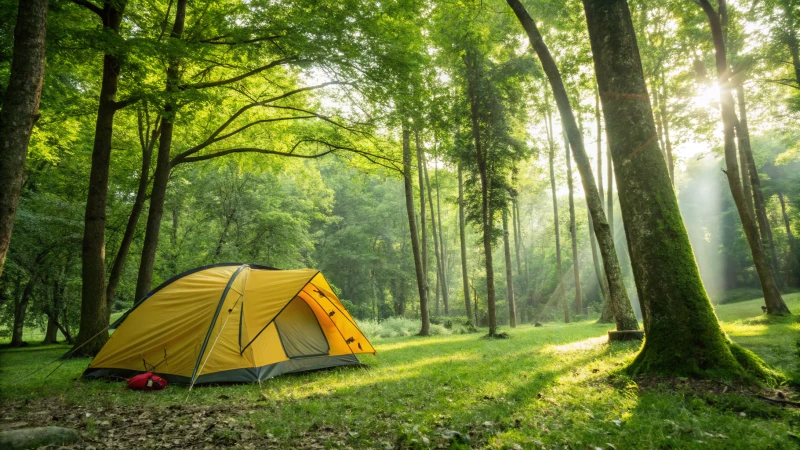
The Science Behind UV Damage
I remember the first time I realized how brutal the sun could be on camping gear. It was during a trip in the scorching summer heat, and my once vibrant tent faded right before my eyes. That experience taught me about the sneaky damage UV rays can do over time. These rays break down the fabric strength4, causing it to lose its strength and waterproofing capabilities. By choosing a spot with shade, you’re giving your tent a much-needed break from these harsh elements.
Benefits of Natural Shade
There’s nothing quite like finding a perfect camping spot under a canopy of trees. Not only does it feel like nature’s own air conditioning, keeping the inside of your tent cooler, but it also offers unbeatable protection from UV rays. During those sweltering summer days, staying cool becomes crucial, and natural shade is your best ally.
Choosing the Right Spot
When I scout for that ideal spot, I think about where the sun travels throughout the day. It’s almost like a dance—finding where shadows fall at different times can make all the difference. Here’s a little guide I’ve put together:
| Time of Day | Best Shady Locations |
|---|---|
| Morning | Eastern sides of hills |
| Midday | Beneath dense tree canopies |
| Afternoon | Western sides of structures |
Utilizing Man-Made Solutions
Of course, not every camping location is blessed with natural shade. For those times, I’ve learned to get creative. A trusty tarp or portable canopy can be a lifesaver, providing the necessary cover when nature doesn’t cooperate. And don’t underestimate the power of UV-protective sprays5; they add an extra layer of protection to your tent fabric.
Economic and Environmental Impact
It’s not just about preserving your tent; it’s about doing right by our planet too. By extending your tent’s life through proper shading, you’re saving money and resources. Every year your tent survives means fewer materials used for replacements—a win for both your wallet and Mother Earth.
UV rays can degrade tent fabric strength over time.True
UV exposure weakens fabric, causing fading and loss of waterproofing.
Pitching in shade does not affect tent temperature.False
Shade keeps the tent cooler, crucial for comfort during summer.
How Can UV-Protective Sprays Improve Tent Longevity?
Ever wondered how to keep your tent looking and feeling brand new after countless adventures?
Yes, UV-protective sprays can significantly enhance tent durability. They form a barrier against harmful UV rays, preventing fabric degradation, fading, and loss of water resistance, which extends the lifespan of your tent.
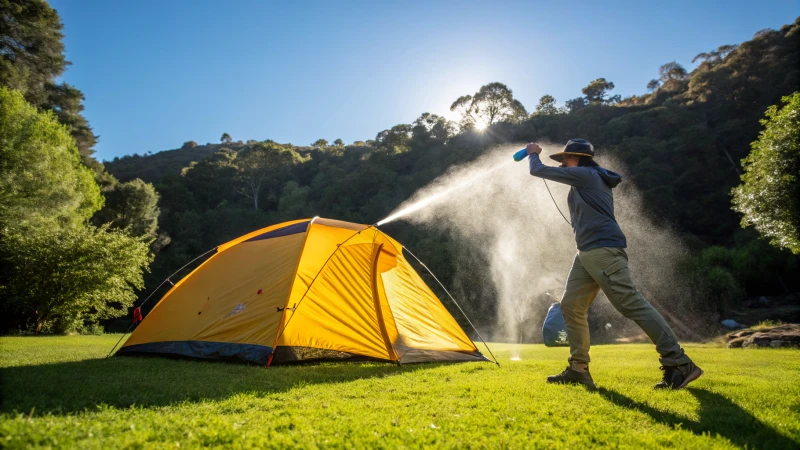
Understanding UV Damage on Tents
I remember the first time I took my tent out for a week-long camping trip. I was so excited to finally escape the hustle and bustle, but as the days passed, I noticed the fabric of my tent seemed to be fading faster than my energy levels by day four. I hadn’t realized how much damage those relentless UV rays6 could do. Sunlight isn’t just about getting a tan or soaking in some warmth; it sneaks up on your tent fabric, weakening those fibers, fading the vibrant colors, and even impacting its ability to repel water. It’s like watching your favorite shirt slowly lose its charm over repeated washes.
Benefits of Using UV-Protective Sprays
After that trip, I discovered the magic of UV-protective sprays. These aren’t just any sprays; they act like a shield, protecting your tent from the sun’s unforgiving rays. Imagine having an invisible armor that keeps your tent’s fabric strong and vibrant. Applying these sprays is a breeze and can be done whenever you feel your tent needs that extra layer of defense. Most are water-resistant too, meaning they double as rain guards.
How to Apply UV-Protective Sprays
- Choose the Right Spray: This is where your journey begins. Not all sprays are alike, so picking one specifically for outdoor fabrics is crucial. I’d recommend checking some reviews7 to see what other adventurers are saying.
- Clean the Tent: A clean surface ensures better adherence. Trust me, taking a few extra minutes to clean off dirt and debris pays off.
- Apply Evenly: Follow the instructions and spray evenly over the entire tent surface. Let it dry completely before heading out.
Real-World Examples
On one camping trip, the weather was so unpredictable! One moment it was sunny, and the next, a downpour. But thanks to my UV-protected tent8, I felt secure knowing that it could handle whatever nature threw our way.
Table: Comparison of Popular UV-Protective Sprays
| Brand | Features | Price Range | User Rating |
|---|---|---|---|
| Brand A | Water-resistant, quick-dry | $20-$30 | ★★★★☆ |
| Brand B | Eco-friendly, long-lasting | $15-$25 | ★★★☆☆ |
| Brand C | Extra-strength, multiple uses | $25-$35 | ★★★★★ |
Choosing the right spray is like finding the perfect camping partner—it needs to match your specific needs. This table can help you make an informed decision.
By integrating these protective measures into my routine, I’ve been able to enjoy my tent for many more adventures without worrying about its durability or performance.
UV rays cause tent fabric to fade and weaken.True
UV rays degrade fibers, causing fading and reduced durability.
All UV-protective sprays are water-resistant.False
Not all sprays have water-resistant properties; check labels.
What Other Steps Can You Take to Minimize Sun Exposure?
Ever had a sunburn so bad it felt like you could fry an egg on your arm? Been there, done that, and it’s no fun!
To minimize sun exposure, I recommend wearing UV-protective clothing, setting up shade structures like umbrellas or canopies, planning outdoor activities for early morning or late afternoon, and including dietary antioxidants to support skin health.

Wear UV-Protective Clothing
I still remember the first time I discovered UV-protective clothing. It was like finding a secret weapon against the sun. Choosing clothes with a high Ultraviolet Protection Factor (UPF) can be a game-changer. I now look for stylish options that don’t just look good but also protect me. Garments labeled with UPF ratings of 30 or higher are my go-to.
| UPF Rating | Protection Level |
|---|---|
| 15-24 | Good |
| 25-39 | Very Good |
| 40-50+ | Excellent |
I’ve started wearing long sleeves and pants made from tightly woven fabrics, especially when I know I’ll be out in the sun for a while. It makes such a difference in how my skin feels after a day outdoors.
Use Shade Structures
On our family beach trips, I can’t count how many times the kids and I have sought refuge under our trusty beach tent. Portable shade structures like umbrellas, canopies, or tents are lifesavers for those sunny days. Setting them up in strategic locations9 where we spend the most time outdoors is key.
Investing in a beach tent or large umbrella with UV-blocking capabilities has been a great addition to our beach gear. Not only do these provide sun protection, but they also offer a cool spot to chill out when the sun is blazing.
Schedule Outdoor Activities Wisely
I’ve learned to plan our outdoor adventures either early in the morning or later in the afternoon when the sun’s intensity isn’t as fierce. UV radiation peaks between 10 a.m. and 4 p.m., so avoiding this window helps reduce exposure.
Taking breaks in shaded areas during peak hours is another trick I’ve incorporated into our routine. Combining this with other methods10 enhances our overall defense strategy.
Incorporate Dietary Antioxidants
Eating foods rich in antioxidants has become part of my daily routine to bolster my skin’s defenses against UV damage. Foods like berries, leafy greens, nuts, and green tea are now staples in my diet.
These aren’t just healthy snacks; they contain compounds that may help neutralize free radicals11 generated by UV exposure. This internal protection complements external measures like sunscreen beautifully.
By using a mix of these strategies, I’ve found I can effectively minimize sun exposure and keep my skin healthier. It’s all about taking small steps that add up to big protection.
Wearing UPF 40+ clothing provides excellent UV protection.True
Clothing with UPF 40-50+ is rated as providing excellent protection.
UV radiation is weakest between 10 a.m. and 4 p.m.False
UV radiation actually peaks between 10 a.m. and 4 p.m., not weakest.
Conclusion
Protect your tent from UV damage by using UV-resistant fabrics, pitching in shaded areas, applying protective sprays, and minimizing sun exposure to extend its lifespan.
-
Learn how UV-resistant fabrics extend tent lifespan and durability. ↩
-
Explore diverse uses of UV-resistant fabrics across industries. ↩
-
Discover how UV-resistant clothing protects against skin damage. ↩
-
Explore how UV rays can weaken tent materials, leading to potential damage. ↩
-
Discover effective sprays to protect your tent from harmful UV rays. ↩
-
Learn about the negative impacts of UV rays on different tent materials and how they degrade over time. ↩
-
Discover consumer reviews and ratings to choose the most effective UV-protective spray for tents. ↩
-
Understand how UV-protected tents perform better in long-term outdoor use and what advantages they offer. ↩
-
Explore this link for the best portable shade solutions to enhance sun protection during outdoor activities. ↩
-
Learn effective ways to minimize UV exposure during the sun’s peak intensity hours. ↩
-
Discover how antioxidants can fortify your skin against UV-induced free radical damage. ↩



